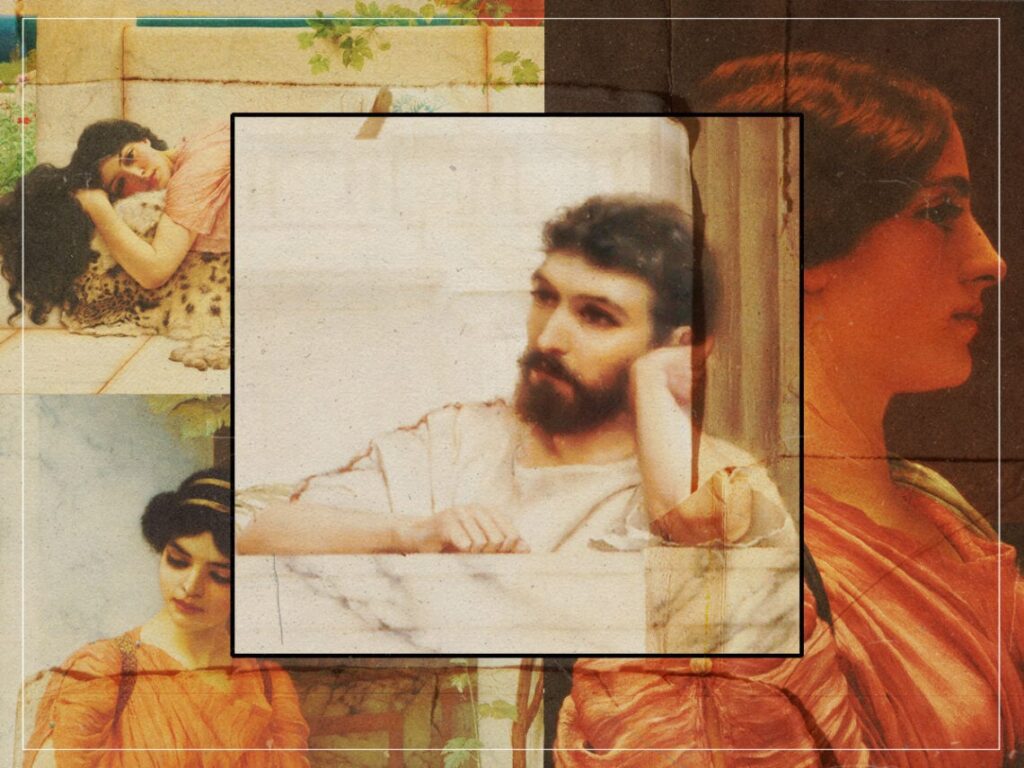John William Godward: The painter pushed toward suicide by indifference
 Posted On
Posted On
(Credits: Far Out / Collection of Fred and Sherry Ross / John William Godward )
There is no shortage of figures from the art world who didn’t get the recognition they believed they deserved until after their death, with John William Godward taking it upon himself to try and expedite the process after his style became increasingly obsolete in the face of modernism’s rise.
Emerging towards the end of the neoclassical era, Godward established himself by painting vibrant and decadent scenes from ancient history, whether it was Roman or Greek. The downside is that by the time his work began exhibiting nationwide in the 1880s, he was following a century of neoclassic work, with the movement dwindling in importance and appeal.
Godward had a chip on his shoulder from the very beginning, though, with his family disapproving of his decision to become an artist in the first place. He eventually fled the country altogether when he moved to Italy with a model from his paintings in 1912, which caused his nearest and dearest to cut all ties with him, to the point he was even forcibly removed from family photographs with a pair of scissors.
Regularly compared to fellow neoclassic artist Lawrence Alma Tadema, Godward’s work regularly featured beautiful women standing against vast and eye-catching landscapes. There was incredible depth, texture, and technical skill in his most famous works, but he could never reconcile his emergence with the turning tides of public opinion.
With modern art continuing to capture more and more attention as the medium’s latest major shift in landscape, Godward felt he wasn’t the recipient of the praise or admiration he deserved. He was an immensely skilled painter with a keen eye for detail, but that was an approach his peers and contemporaries were becoming less and less interested in as the 20th century progressed.
After almost a decade of living abroad, Godward returned to the United Kingdom in 1921, only to commit suicide a year later. In another heart-breaking blow, even in death, his family remained as distant as ever, reportedly going so far as setting his personal effects ablaze.
Despite being actively affected by the encroaching irrelevancy of neoclassicism in favour of modern art, Godward never changed or altered his favoured approach. He’d found what he was good at – and he was very good at it – but there was never an overt desire for evolution on his part.
He eventually committed suicide at the age of 61 in December 1922 and addressed his concerns in the note he left behind. “The world is not big enough for myself and a Picasso,” it read, with the devastation caused by the ongoing indifference to his work convincing Godward that there was only one reasonable outcome. Cruelly, like countless other artists before him, he found the appreciation in death he so desperately sought in life.
[embedded content]


